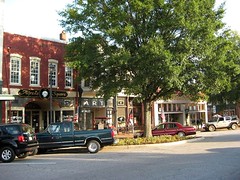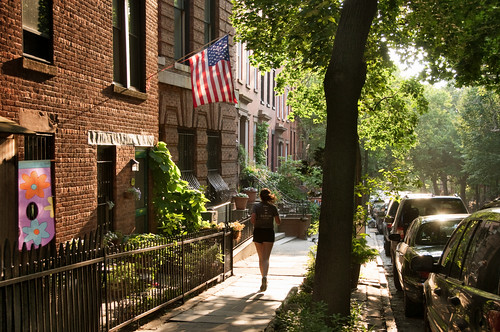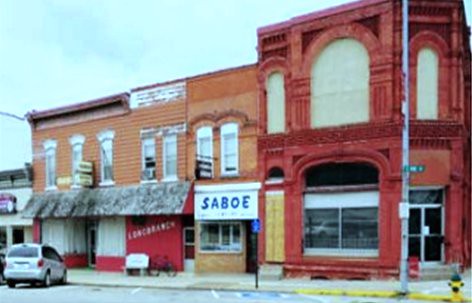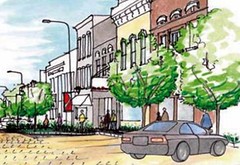Assembling the green facts to support preservation

Posted March 7, 2011 at 1:25PM
“The reasons for preserving our existing building stock aren’t strictly cultural and sentimental; preservation should be understood as a land-use tool and as an economic tool that can be used to build denser, more attractive cities.”
The quote comes from Liz Dunn, director of the National Trust’s “Preservation Green Lab,” based in Seattle. It is very well said.
As I wrote in a post about a year ago, it has become trendy in preservation circles to say that “the greenest building is one that’s already built,” a catchy phrase usually attributed to preservationist Carl Elifante. As I pointed out then, it isn’t always literally true, since some buildings are simply poorly designed and/or maintained and, besides, there are plenty of already-constructed buildings in lousy locations where transportation emissions required by driving to and fro can overwhelm whatever resource and pollution savings might be internal to the building.
But it’s true enough for rhetorical purposes, especially if one is talking about an older building designed for the ages, in an older neighborhood. But, still, that begs the question, just how green is an older building, exactly? Beyond the environment per se, what is its value as a community-building device?
 The Trust’s Green Lab was established two years ago to provide some answers. The initiative’s web site explains that, while recent research has explored the environmental benefits of newly constructed green buildings, it has not, for the most part, studied the benefits of building reuse. Similarly, there is insufficient research related to other issues that are important to building reuse and neighborhood reinvestment, such as how to balance demands for increasing urban density with maintaining character-rich neighborhoods that offer economic opportunity to local employers.
The Trust’s Green Lab was established two years ago to provide some answers. The initiative’s web site explains that, while recent research has explored the environmental benefits of newly constructed green buildings, it has not, for the most part, studied the benefits of building reuse. Similarly, there is insufficient research related to other issues that are important to building reuse and neighborhood reinvestment, such as how to balance demands for increasing urban density with maintaining character-rich neighborhoods that offer economic opportunity to local employers.
One interesting study described on the site is a collaboration with the University of Washington, using a methodology pioneered by Danish walkability guru Jan Gehl. In particular, the study explores whether variation of age, texture, and scale in buildings inherently brings a degree of richness to the streetscape that encourages walking and supports quality of life. “The Gehl approach is a proven observation- and survey-based data gathering methodology that is used to measure the impacts of detailed features of the built environment on pedestrian behavior in the public realm.” I can’t say that I know exactly what that means, but I do know that Gehl’s body of work is impressive and substantial.
The Preservation Green Lab’s work is not limited to research, though. It also pursues policy initiatives that build upon the intrinsic sustainability features of older buildings to make them even greener. In the small town of West Union, Iowa, for example, the Lab has developed a case study based on the community’s conservation-oriented visioning exercise for its old town center and, impressively, a district heating and cooling system for the Main Street area that relies on geothermal wells to tap the ground’s stable temperatures. The Lab estimates that, for those buildings that are connected to it, the district geothermal system will reduce carbon emissions by 31 percent compared to conventional heating and cooling.
This work has resulted in two policy papers, the case study and The Role of District Energy in Greening Existing Neighborhoods, both published last fall. In another project, the Lab is developing and advocating energy codes based on performance rather than on specific, prescriptive measures. This is important, since most prescriptive codes were not written with retrofitting older buildings in mind, and make compliance much easier for new construction than for adaptation. Since performance can be measured, this is unnecessary: the environment doesn’t care about methods but results. Seattle and San Francisco are among the pioneers of the performance-based approach.
I’ll mention one more related project: according to the organization’s web site, the National Trust has also commissioned a “life cycle assessment” study to quantify the environmental value of building reuse compared to new construction, using four to six scenarios in four different climate areas. The Trust says that these scenarios will reflect as accurately as possible the common circumstances in which buildings are demolished and replaced with new construction, and that the study will be academically rigorous and subject to peer review.
I learned about all this work from Patrice Frey, the Trust’s sustainability director, with whom I met on Friday. I am immensely impressed. Intuitively, most of us get it that you can’t improve a city or a neighborhood by tearing it down, and that historic districts are usually the best places to be in communities. But intuition isn’t enough for policymakers. We need facts, and I’m glad the Preservation Green Lab is on the job.
Move your cursor over the images for credit information.


